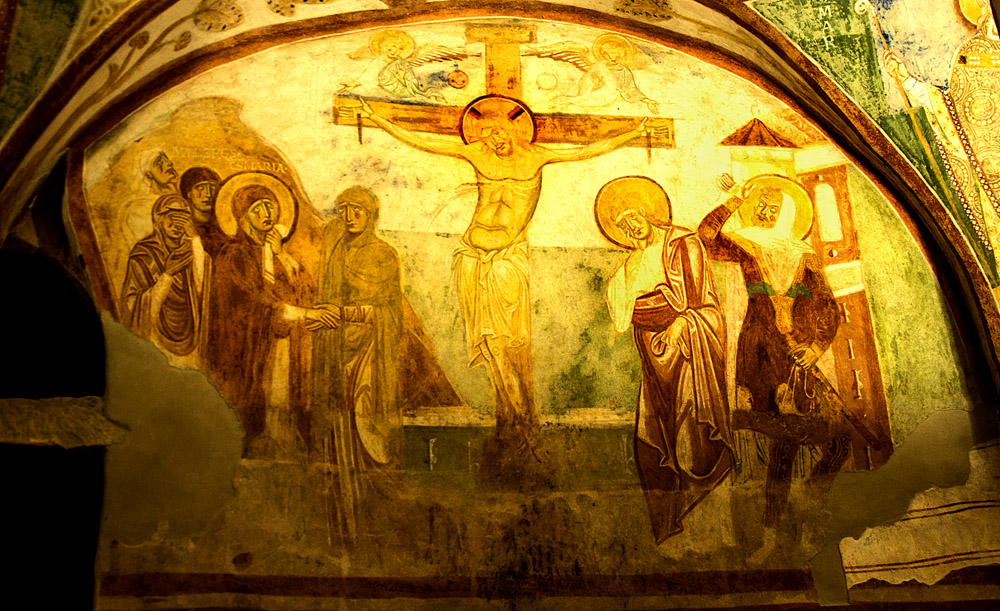The Crucifixion

Circa 1180
Fresco
Crypt, Basilica of Santa Maria Assunta
Aquileia, Italy
This is a very early example of pathos in a Crucifixion image. The women on the left weep while they seek to console Mary, who wipes the tears from her face with a cloth. The woman behind them, also weeping but with her eyes fixed on Jesus, has no veil so is probably St. Mary Magdalene. (According to Wikipedia, in the 12th century veils like the ones seen here were worn by older women and widows.) These women and this level of emotionality rarely appear in Crucifixion images before the 12th century.
The man on the far right is most likely St. Longinus. His halo marks him as a saint, his sword marks him as a soldier, and the absence of pupils in his eyes would denote the blindness he suffered before his miraculous cure. (The other bystanders all have pupils.) His right arm raised in a gesture of acclamation seems to conflate him with the centurion of Matthew 27:54 who says "surely this was the Son of God."
As in many Crucifixion images from as far back as the 6th century, the sun and moon are pictured above the crosspiece, in this case carried by a pair of angels.
An inscription above the women reads MULIERES C¯ S¯ MARIA, "the women with St. Mary." The letters on the plaque at the top of the cross are now illegible, but one can tell that there were at least six of them, so they were not the usual inri.
According to Tavano (197), opinions range widely as to when in the 12th century the crypt frescos should be dated, but most agree on a date around 1180.
View this image in full resolution.
Read more about images of The Crucifixion.
Read more about images of St. Longinus.
Photographed at the basilica by Richard Stracke, shared under Attribution-NonCommercial-ShareAlike license.